REVIEW: Capcom Arcade 2nd Stadium - A Collection of Inspirations
Please send me a quarter for each section of this you read
Collections occupy a difficult space to discuss in the video game landscape. They are essentially the closest thing to pure products that exist on the market – they repackage older creative efforts in a way that’s hopefully well-done and faithful, and usually there isn’t much more to say about it than that. On that level, I can say that Capcom Arcade Stadium, and now this second round of it, competently presents dozens of great classic Capcom titles.
There are far too many options available for playing many of these games to say that this collection is the definitive way to play them. Playing these games on modern hardware inherently comes with caveats like increased input lag or minor emulation bugs. Capcom has altered or outright removed some in-game graphics present in the original versions of some games for what I assume are global market and ratings sensibilities. English versions of select games aren’t available for what may be licensing or legal reasons. These are unfortunate realities that follow with the inevitable passage of time.
I suspect most players will find these caveats acceptable. At the very least, I do. If 2nd Stadium isn’t the definitive way to play these games, it is certainly the most convenient way to do it on modern game consoles. If there are specific games you want to revisit or you just want to casually experience some video game history, the Capcom Arcade Stadium collections are great ways to do it.
It would not be fair to end things there, though. There are sparks of inspiration present in this collection that elevate it beyond just a product. So while we’re inspired, I figure what better way to capture the spirit of a collection than to provide my own collection to talk about it.
We’ll chat more about the Arcade Stadium itself at the end of this article. For now, I want to dive into the games included. Not all of the games, there’s 32 in all and I recognize there’s a limit on how much any human being can tolerate my writing, but a good chunk of them. Capcom largely inspired my love for games, so I’d like to share a little bit of what I take from their catalog so that maybe you can draw some inspiration from them too.
The Importance of Taking the First Step - Street Fighter
To get anywhere in this world, you must take the first step forward. That step isn’t always a graceful one. Grace takes practice and experimentation in order to develop your technique. You won’t get there if you never step out at all. The original Street Fighter teaches that lesson better than any game out there.
I won’t mince words: Street Fighter is a sloppy game. The AI pounds you into the ground, the controls don’t work consistently, and the hit detection is unreliable. Your only salvation lies in throwing out special moves at the right time and right place, which is a gamble from the moment you attempt the input. Any efforts to play the game strategically will result in your complete annihilation.
Still, the game has merits. Traveling the world to go up against different fighters is a fun concept. The character designs are appealing. The special moves add a depth that most games, particularly games based around fighting, weren’t doing at the time. All of these elements simply needed expansion and refinement to become something truly great, which eventually came to pass with its sequel.
If Street Fighter didn’t exist to be expanded upon, there would be no Street Fighter II. Without Street Fighter II, Capcom would have become a very different company. We likely wouldn’t have the fighting game genre in the same way we know it today. Not to mention how different things would be for the millions upon millions of people whose lives have been shaped, at least a little bit, by Street Fighter. Street Fighter ultimately had an impact far beyond what anyone who worked on it could have expected.
You need to take the first step, even if you trip and fall, because you have to start somewhere and often there’s nowhere to go but up.
Consistency is (Mon)key - SonSon
As you may have read above, journeys begin with a single step. You might then wonder: well, what do I do about the rest of the journey? SonSon knows the answers. Surviving his journey to the west (presumably the right side of the screen in this game) requires all the virtues you need to complete any journey.
Journeys are like marathons. To run a marathon, you need consistency. To be consistent, you need awareness, both of yourself and the world around you. SonSon steadily marches forward automatically. That’s a good start, but the path forward contains many hazards. Navigating past those hazards requires constant decision-making. You can prioritize survival by staying on the same path and only killing the enemies you need to, but if you go out of your way to defeat an entire group you get a point bonus. Collecting food scattered on the grounds also awards points. You want points because they convert into lives, which gives you a buffer for when you make mistakes.
In this way, you are constantly assessing yourself and your surroundings. Can I kill all of these enemies for the point bonus, or should I focus on clearing a path to survive? Should I pick up those french-fries? They look pretty tasty, but they might put me in a bad spot. Which enemy group should I take out first? What am I realistically capable of doing in this situation? These are the complex thoughts of a monkey.
Whether your goal is saving your animal friends or writing a Capcom arcade collection review, reaching your destination requires prioritization and hard work. Above else, you need to assess what you’re capable of to maintain consistency. If SonSon can do it, so can you.
Building on the Battle - Mega Man: The Power Battle
Bosses are a highlight of classic Mega Man games in every sense except for the battles themselves. Their varied designs, special weapons, and themed stages are arguably the most distinguishing aspect of each entry in the series. The actual fights, however, tend to be simple and straightforward.
That’s by design. Mega Man bosses are obstacles with multiple solutions; they fit the nonlinear stage selection of the games as skill-dependent gatekeepers. Usually the boss throws out a basic pattern to overcome, and either you keep pace with it or resort to using the boss’s weakness to brute force through. Bosses serve a different purpose than the levels themselves, which are more complex, tightly designed obstacle courses that truly push your mastery of the core mechanics.
Mega Man: The Power Battle pushes you with the boss fights instead. Fights make up the entirety of the game. It’s an unusual decision, but one that works largely due to the arcade-like nature of the game.
By placing emphasis solely on the bosses, it allows for them to be more engaging. In Power Battle, bosses have expanded and reworked movesets that retain simplicity while pressuring you harder if you want to avoid damage. The environment also plays an unusually important role - you can hop off walls now, adding an additional strategic layer to the game. With no stages to worry about, these bosses feel like fair challenges. You can take more hits than a normal Mega Man game, but your health carries over between fights, so it’s akin to a gauntlet with longer-term consequences.
To me, arcade games by their very nature elevate the importance of self-improvement. This is a game that improves the more you challenge yourself, which honestly isn’t that different from how I approach normal Mega Man games. It’s just easier to approach in this game, since you only have to worry about mastering the bosses. I prefer to turn the difficulty up and attempt to see how many perfect clears I can get. Some arcade games can be insanely challenging to 1CC, while the Power Battle hits a sweet spot that feels achievable for most people without being boring.
Power Battle demonstrates how a simple recontextualization of a game’s design elements can breathe new life into it. In Power Battle’s case, it results in something infused with enough arcade DNA to be engaging while still faithfully representing the core ideas of the source material. In other words, Power Battle successfully converts the boss fights into a highlight in every sense.
Environmental Destruction - Eco Fighters
When it comes to saving the environment, I usually think about how most places don’t give you plastic straws anymore. Not that exciting. Eco Fighters interprets the idea of “saving the environment” more literally. Its methods may be extreme, but Eco Fighters displays a deep love of the Earth that I find irresistibly charming.
Honestly, the premise and the goal appear to be at odds here. In Eco Fighters, evil corporations control the Earth and the surrounding solar system, as they are wont to do. They mine resources, pollute the ocean, and fill the galaxy with waste without a care. Rather than relying on legislators to handle the problem with laws, the protagonists take matters into their own hands, becoming judge, jury, and executioner. You are set on a mission of total annihilation, blasting apart the machinery and weapons that the corporate fat cats use to achieve their nefarious ends. A lot of care goes into destroying what they’ve built, but little goes into the long-term effects of what you’re doing. This is hardly an eco-friendly cleaning protocol.
The naïve simplicity underlining the premise also works its way into the mechanics. Your ship’s defining ability comes from its ability to rotate a full 360 degrees. Basically, you’re recreating the circular symbol of the planet every time you spin it around, which the enemies and bullet patterns often force you to do. You may be spinning around giant spiked wrecking balls or laser swords, but the message remains clear – if you mess with Earth, you will be eliminated.
Eco Fighters’s premise elevates the game to further heights than it would have reached otherwise. I don’t necessarily disagree with the idea that game mechanics should come first, but sometimes having the right theme can guide the direction of those mechanics and the game as a whole. Eco Fighters masterfully shows just how exciting saving the environment can be.
Existential Questions - Pnickies
Mankind has long pondered what the world was like before we existed. According to the lore of Pnickies, it involved a lot of competitive puzzle battles between angels and devils. That’s probably cooler than anything mankind has done. Sometimes the answers behind what led up to something’s creation may be more interesting than the creation itself. Pnickies stands out as one such case to me.
I’m not saying that to be mean to Pnickies. I like the game. It’s just shockingly derivative of another puzzle game that was released a few years prior: Puyo Puyo. Pnickies more than just resembles Puyo Puyo, it virtually is Puyo Puyo. It only ever so slightly twists the formula – instead of the goo blocks disappearing when enough of the same color have gathered, you also need to connect two or more special star blobs before they clear the screen. That quirk alters the game a bit, but it hardly transforms the experience entirely.
Despite how this looks, Capcom didn’t blatantly rip off Puyo Puyo. Capcom didn’t even develop the game themselves. Compile, the developer behind the Puyo Puyo games, made Pnickies. I guess this all makes sense then, right? It certainly does, except for all of the questions its raises:
How did this happen? Did Capcom see Compile collaborating with Sega to bring Puyo Puyo to the arcades and say “we want one of those too?” Did Compile really just make Puyo Puyo again and change it a little to sell to Capcom? Was that the intent? Was this some kind of business deal gone wrong? What happened to Compile and Capcom’s relationship? Were spies involved? Assassins?
Yeah, sorry, I don’t have any answers for you. If the story exists out there in some interview, I couldn’t find it. I forgot to mention that a big part of what makes the answers behind something’s existence interesting is not knowing what those answers are. Oh well.
Cruise Control for Cool - Rally 2011 LED Storm
This may be a personal problem, but I’ve never felt cool while driving a car. I am usually just relieved that everyone survived the experience. Thankfully, games like Rally 2011 LED Storm can give me a taste of what it’s like to be cool while driving.
I guess the main problem I have is that I’m not jumping on top of enough nearby cars to make them explode. That works as a good way to beat traffic, too. I’m also not pressing the button that transforms my car into a motorcycle for max speed enough. Not to mention I’m missing all of these energy barrier power ups, gasoline canisters, and jump ramps on the road. There’s a lot more depth to this driving thing than I thought.
Despite the trail of chaos I’m leaving behind, driving at breakneck speeds and performing all of these crazy stunts oddly relaxes me. I suppose that’s because like normal, not-cool driving, playing well boils down to paying attention, recognizing the situation in front of you, and responding appropriately. LED Storm captures the essence of driving despite how over-the-top it seems, so much so that I think I’m ready to test out what I’ve learned. See you on the road!
Immortal Creativity - Darkstalkers series
Darkstalkers are not dead. They live on forever, even if they won’t be getting new games any time soon. Darkstalkers characters will always appear in crossovers, get cameos, produce merchandise, and have their old games re-released periodically. I suppose whether or not you want to call this living or undeath depends on your perspective. That distinction would make little difference to much of the Darkstalkers cast. Despite everything, Darkstalkers endures, and that immortality is inspiring.
Darkstalkers endures in large part because of its unrestrained creativity. The blend of horror elements and Street Fighter sensibilities strikes an unusual chord that permeates every element of the game. Everyone seems to love Morrigan, but all of the Darkstalkers characters ride a line between appealing and grotesque. They look cool or cute at one moment, but then their attacks and animations can give a totally different impression. More than any other Capcom game, I get the sense that the artists were leading the charge with these games. Capcom games ooze artistic passion normally; for Darkstalkers it feels like the passion was flooding.
Beyond the art, passion can be felt in the game mechanics as well. Darkstalkers games introduced mechanics that gradually evolved the Street Fighter formula into something much more wild and aggressive. Faster movement speed, air dashes, push blocks, chain combos, EX moves, and powerups like Dark Force laid the groundwork for games to push far beyond the limits of what (relatively) grounded games like Street Fighter II were doing. Between the art and game mechanics, Darkstalkers conveys a sense of creativity, it implies anything can happen in these games.
Capcom may never develop a new Darkstalkers game, but Darkstalkers accomplished something that few series, even ones getting new releases today, can manage: it carved a place in people’s hearts. It outlasts other games based on the sheer power of creativity it displayed and how that affected people. We never know for sure if our next creative effort will be our last, so we should always be putting our full passion into what’s in front of us at the moment, like the people behind Darkstalkers did. More than any promise of future sequels, strong creative efforts are the best way to live forever.
Ambitiously Abbreviated Adventure - Magic Sword
Large-scope adventures can be difficult to convey in an arcade game. Arcade design aims to continually boot off players to make room for the next one, which limits how meaty an experience can feel. No matter how impressive the art is or how difficult the game can be to complete, it all tends to be over within an hour or less. This obstacle can be overcome, it all just depends on the execution. Magic Sword carves out a perfect balance between arcade quickness and a full-fledged adventure.
When people talk about scope in games, in most cases they’re referring to how big the game feels. That’s the basis of open world games – you have an entire world to explore however you want to do it. Those are the two core elements of a “big game,” I think: a large world and a lot of options. It’s not quite an open world game, but technically Magic Sword contains both of these elements.
Magic Sword charges you with exploring a massive 50 floor tower. That number might seem like a breeze initially, but by the time you reach the top you really feel the weight of adventure. Or maybe that’s just frustration from dying so much. Traps are everywhere and most floors are more involved than they might appear at a glance. You can often reach a door long before you’ve explored the area in its entirety. If you beeline straight for the door to the next floor, you might miss out on big advantages like more powerful companions or useful items.
The easiest way to overwhelm someone is to give them lots of options, and this game shows no mercy. You are constantly presented with opportunities to use keys, open treasure chests, or swap out companions and magic relics. It adds strategy not just in customizing your character, but also in how you approach each stage. Sometimes you are happy with your loadout and a treasure chest may not be worth the risk, while other times you will want to grab everything you can in a desperate gamble to improve your situation.
Despite the length and complexity, Magic Sword maintains its simplicity. You can dress it up with levels, stats, and items all you want, but ultimately you are playing a platformer where you slash monsters with a sword, and that’s satisfying in its own way. Magic Sword deftly mixes complexity and simplicity to create an adventure that feels satisfyingly large.
Context That Packs a Dragon Punch - Street Fighter Alpha series
I love fighting game stories, particularly from before the era of the “story mode.” Story modes are fine, too, but they don’t take much advantage of the video game medium. Instead, other mediums like movies or novels essentially co-opt the game itself in order to tell you the story more directly. Fighting games specialize in indirect storytelling, and the Street Fighter Alpha games are the shining example of how much this method can add to the experience.
Fighting game narratives dump out a jigsaw puzzle of plot developments, backstories, and relationships and then asks the player to put it all together. Win quotes, endings, sprite animations, and even character designs all provide morsels of story to earn and scavenge from. This might seem obtuse, but it actually cleverly lets the player engage as much or as little as they want to with the story. If you like a specific character, you can play through their specific arcade mode, see their ending, and then be satisfied. If another character catches your interest on the way there, then you can play through their perspective too.
Alpha games take a step beyond the usual fighting game narrative tricks with their premise. They turn back the clock to fill in the gaps between the first and second game, which adds a depth to the characters that informs both their past and future appearances. It’s one thing to be told how someone was when they were younger, it’s another entirely to be able to see and experience it directly.
Ryu’s face looks softer. Chun Li prioritizes comfier athletic attire over her more formal dress. The returning members of the Street Fighter II cast are noticeably less mature. Their attacks are different, often less refined techniques that would be developed more in later games. On the opposite end, we get to see older versions of original Street Fighter like Gen and Birdie, who have greatly expanded arsenals that make them feel like legitimate characters rather than random chumps that Ryu spammed a few fireballs at years ago.
Alpha also expands the relationships between characters by providing more opportunities for them to interact through rival battles. For the first time, we actually get to see Ryu and Ken act like friends in-game. Sakura shows how Ryu can influence others, while Charlie lives the legend that inspired Guile to become the person he is. The scope of M. Bison’s villainy dramatically increases in Alpha, with it becoming wildly clear just how much he ruined a lot of character’s lives. Alpha even connects franchises, bringing Street Fighter and Final Fight into the same continuity with the presence of Guy and Cody.
If you were to put it all on paper, it may not seem like much, but fighting game lore can be as deep as an ocean. Fighting games themselves are similar – there was a time where many people brushed them off as button mashers. These days it’s clear that there is a nearly endless complexity and depth to their design. Alpha shows the power of these forces combining for a two-hit combo.
Lonely No More - Mega Man: The Power Fighters
Mega Man 2’s ending seared the definitive depiction of the character into my brain. A robot wandering alone on a seemingly endless journey. The world changes and passes him by, represented by the shifting weather and seasons. He marches on regardless, only stopping to look at the sky and reflect. Eventually, there’s nothing left of him except for his helmet, the sole remnant of his existence.
Mega Man struggles alone in an endless battle. He’ll only disappear when he’s no longer needed. That’s the character.
As a series grows, it runs the risk of distancing itself from its roots. Power Fighters marks one such tipping point. Including Duo as a playable character seals it in my eyes – his presence budges the needle just slightly enough where you have to stop and realize that Mega Man has accumulated a lot of allies. Sure, Proto Man keeps his distance, Bass hates Mega Man, and Duo shuttles back off into space or something in the end, but you can’t shake the sense that Mega Man isn’t really alone in his fight anymore.
I don’t necessarily dislike that. Mega Man doesn’t need to remain stagnant. A development like this is actually even a little touching. Unfortunately, it feels off. Mega Man doesn’t typically tell traditional stories, so this development will likely never be addressed. Power Fighters does a lot of that – perhaps its most notable aspect is how much it seems to promise for future plot developments. The individual character endings consistently hint at future events that to this day have never been paid off.
Power Fighters reflects the subtle growth of Mega Man as a character, it just doesn’t do it in a way with consequences. This development remains an unstated secret between players of Mega Man, never to be acknowledged in-universe. We have to keep it to ourselves. That’s a little lonely in and of itself, so I guess ultimately this development falls perfectly in line with Mega Man’s character after all.
Arcades of the Future - Capcom Arcade Stadium series
Arcades were the coolest. They were like mystical domains full of games I couldn’t imagine playing at home. The graphics and presentation of arcade games always felt a step above what you could find elsewhere; they felt special. In some ways arcades were also intimidating – they were flashy, noisy, and often crowded. Going to an arcade was an experience beyond just the games themselves.
I emphasize the past tense here because the arcades in my memory don’t exist anymore. There are places with arcade machines in them, but these places don’t serve the same purpose. The games are no longer cutting-edge and virtually everything you can play at a modern arcade you can probably play just as easily at home, or worse, on your phone. Have you seen those Flappy Bird machines? What the heck. Essentially, modern arcades are novelties, arcades more in resemblance than in spirit.
Despite the theming of their presentation and menus, the Capcom Arcade Stadiums do not recreate the arcade experience. At least not the experience that existed when the games in this collection were released. Instead, they lean closer to the arcades of the present, or relative to the age of the games included, the arcades of the future.
No other human beings are present. There are no new games. The visual and audio overload of the arcade are safely stifled behind menus and fun music. Wandering through these collections feels more like poking through a private collector’s recreation of an arcade than a true arcade. The Arcade Stadiums exist for the novelty, for the enthusiasts who want to take a trip down Memory Lane and maybe spend some time in Weird Screen Filter Alley.
In that way, the Arcade Stadiums provide a valuable service. The myriad of different visual options for each game provides ways for you to simulate an arcade experience as much as you reasonably can or want to. You can adjust the speed of the games at any point for those occasions where you want to lose to cutthroat fighting game AI in slow motion. When you seek revenge, you can even rewind the games to correct your mistakes. Behind the scenes, the collection tracks statistics like scores, play time, number of clears, and how many times you’ve availed yourself to its game-warping features, which are all available for review at any time.
Essentially, these collections offer ways for you to dissect and customize the games to your liking. This method stokes interest in the games themselves, rather than the arcade they were made for, which is a valiant goal.
Times change, the arcade experience no longer exists. The games that resulted from the arcade experience, however, maintain values worth preserving. Scores of teams and developers injected their passions and creative visions into building a massive amount of video games within a relatively short amount of time. Their efforts resulted in games that affected and inspired a countless number of people. The way I see it, the “arcades of the future” provided by collections like these keep those inspirations alive and available to the extent they can, and that’s just as valuable as any attempt to recreate the arcade itself.
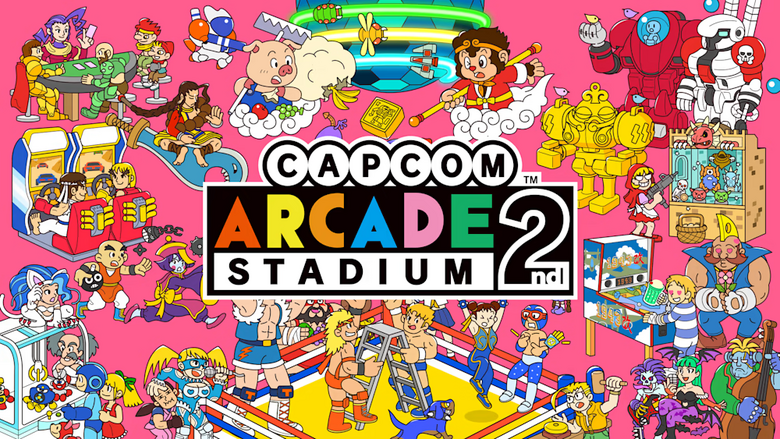
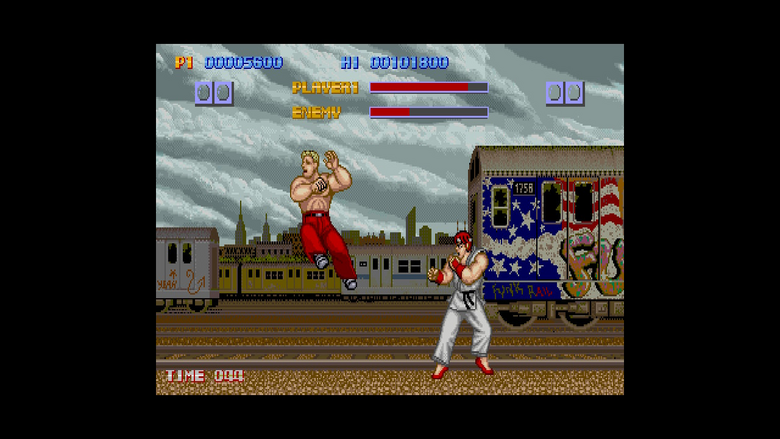
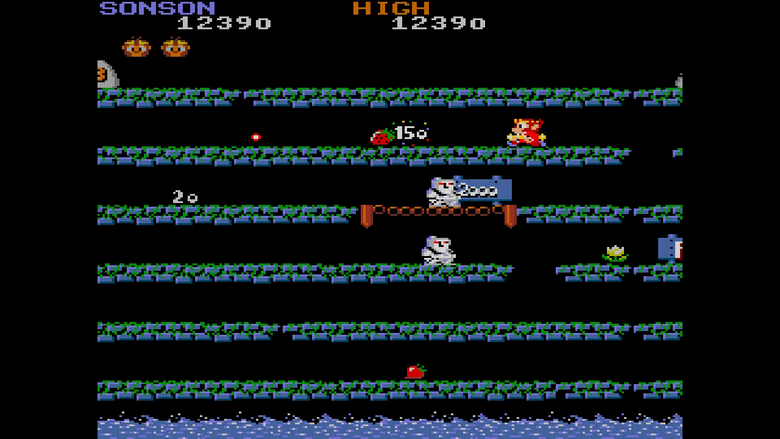
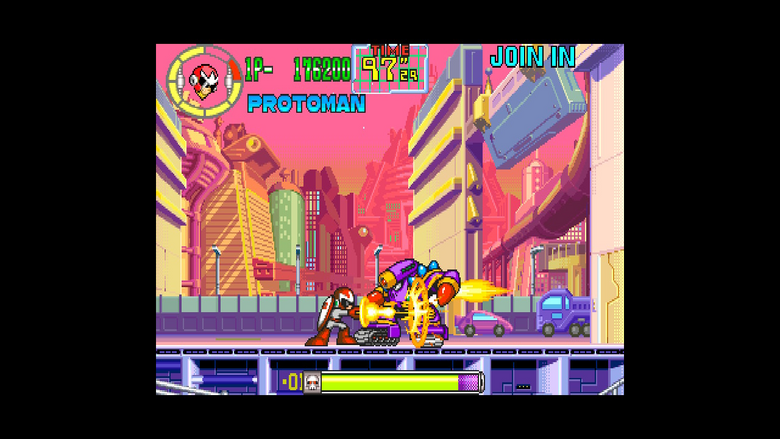
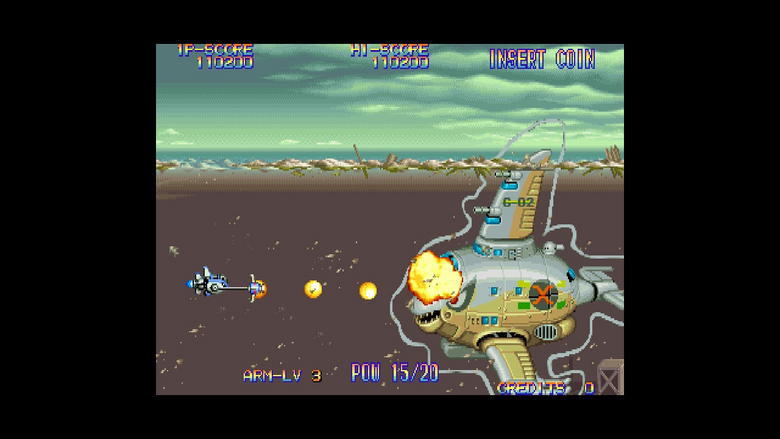
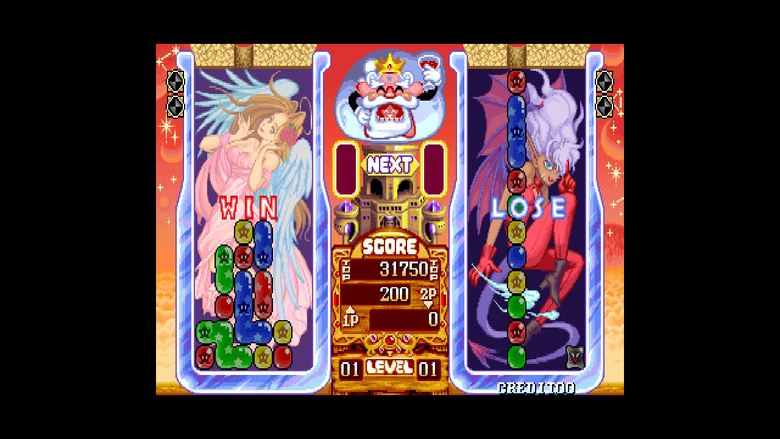

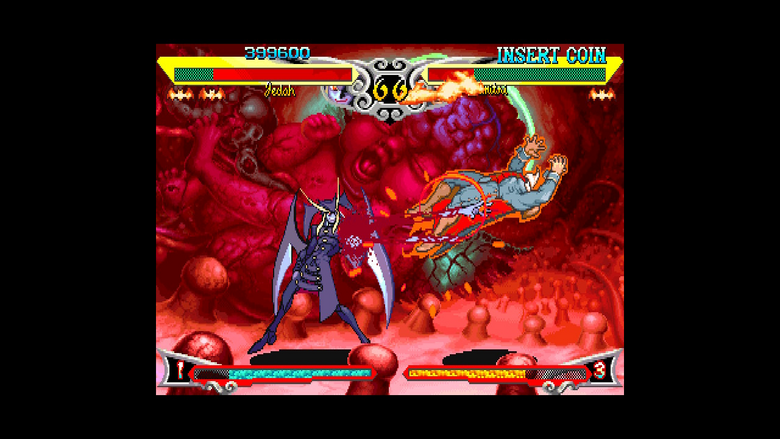

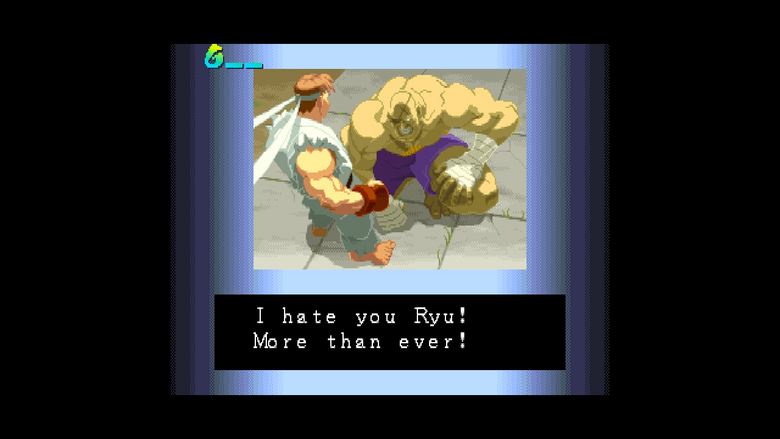

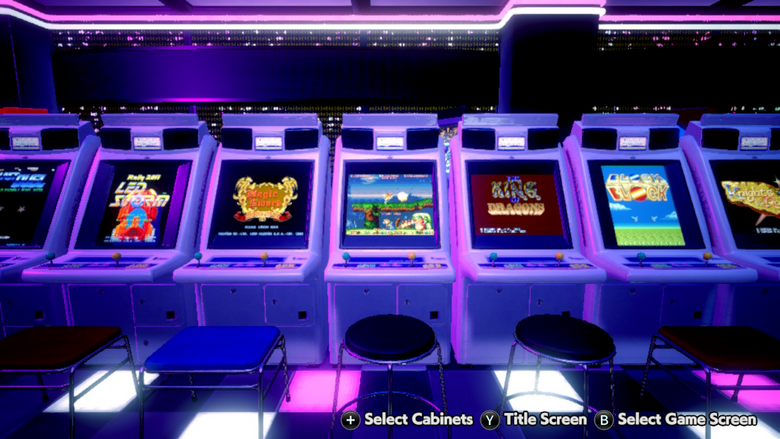
Comments (0)